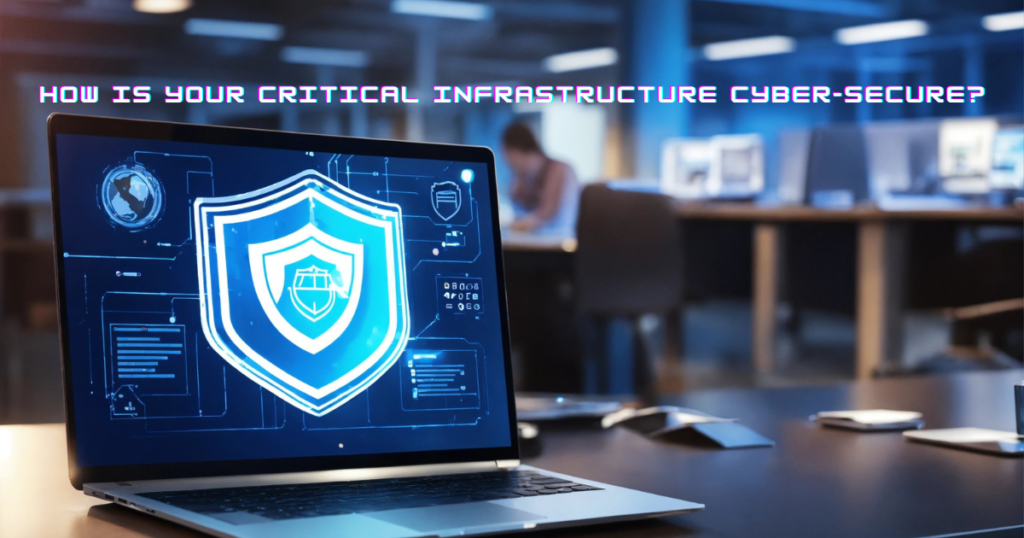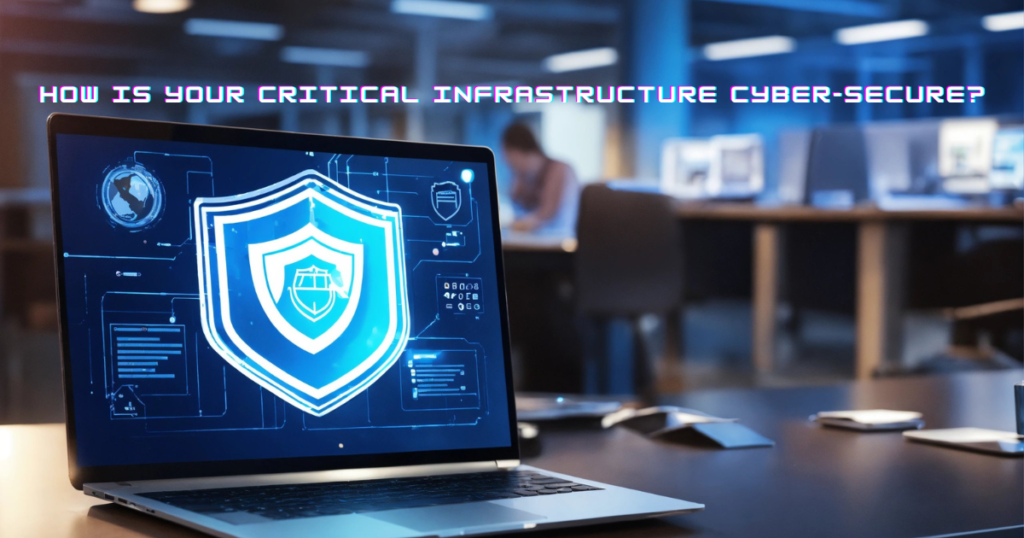Introduction
In our interconnected digital age, critical infrastructure plays a pivotal role in maintaining the stability and functionality of nations. These essential systems — spanning energy, transportation, healthcare, and more — are prime targets for cybercriminals seeking to disrupt operations, compromise data, and wreak havoc. As the threat landscape evolves, businesses must adopt robust strategies to safeguard their infrastructure. In this article, we delve into six key guidelines for protecting critical systems against cyber threats. Safeguarding Critical Infrastructure Against Evolving Cyber Threats

Safeguarding Critical Infrastructure Against Evolving Cyber Threats
- 1. Regulation and Industry Compliance
- 2. Operational Network Isolation
- 3. Large-Scale Bottleneck of File Sanitization
- 4. Security Tools
- 5. Education
- 6. Threat Intelligence Collaboration
- Preparing Your Critical Infrastructure for Zero-Day Vulnerabilities
- Collaborating with Security Researchers to Address Zero-Day Vulnerabilities-Critical Infrastructure
- Conclusion-Critical Infrastructure
- FAQs and Answer
- Disclaimer
1. Regulation and Industry Compliance
Industry-wide regulations, such as the North American Energy Reliability Corporation’s Critical Infrastructure Protection (NERC CIP) standards, dictate the pace of compliance. Organizations must adhere to these guidelines, ensuring robust cybersecurity practices. Compliance not only mitigates risks but also demonstrates commitment to safeguarding critical assets.
2. Operational Network Isolation
Critical infrastructure networks should be isolated from non-essential systems. Implementing strict segmentation prevents lateral movement by attackers. By creating distinct zones for operational technology (OT) and information technology (IT), businesses can limit exposure and enhance security.
3. Large-Scale Bottleneck of File Sanitization
Mission-critical files within critical infrastructure often bottleneck the sanitization process. These files must undergo rigorous checks to eliminate any malicious content. Automated tools that sanitize attachments, documents, and data streams are essential. Regularly updating these tools ensures timely detection and removal of threats.
4. Security Tools
Invest in advanced security tools tailored to critical infrastructure. Robust encryption safeguards transaction data, while intrusion detection and prevention systems (IDPS) monitor network traffic. Endpoint protection, firewalls, and security information and event management (SIEM) solutions form a comprehensive defense.
5. Education
Human error remains a significant vulnerability. Regular employee training on security best practices is crucial. Topics should include phishing awareness, password hygiene, and incident response protocols. An informed workforce contributes to a resilient security posture.
6. Threat Intelligence Collaboration
Collaborate with industry peers, government agencies, and cybersecurity experts. Sharing threat intelligence helps identify emerging risks and vulnerabilities. By staying informed, businesses can proactively adapt their defenses.
Preparing Your Critical Infrastructure for Zero-Day Vulnerabilities
Zero-day vulnerabilities pose a significant threat to businesses, targeting previously unknown weaknesses and leaving organizations vulnerable. To safeguard critical assets, companies must proactively prepare for these stealthy attacks. Here are essential steps to enhance your zero-day vulnerability preparedness:

1. Maintain a Real-Time Cloud Asset Inventory
Implement vulnerability management with real-time asset inventory monitoring to identify potential vulnerabilities promptly.
2. Unify Data Sources–Critical Infrastructure
Consolidate data from various sources, including logs, security tools, and threat intelligence feeds, for quicker detection and response to zero-day threats.
3. Tabletop Exercises (TTX)–Critical Infrastructure
Conduct simulated scenarios to test your incident response capabilities, allowing your team to practice handling zero-day incidents effectively.
4. Vulnerability Management with SOAR
Leverage Security Orchestration, Automation, and Response (SOAR) platforms to automate vulnerability assessment, prioritization, and remediation workflows.
5. Cloud Infrastructure Segmentation
Isolate critical components within your cloud infrastructure to limit lateral movement during an attack and contain the impact.
Remember, while zero-day vulnerabilities may be nearly unavoidable, proactive measures can significantly reduce their impact. By staying vigilant, collaborating across teams, and adopting robust security practices, your business can better defend against these elusive threats.
Collaborating with Security Researchers to Address Zero-Day Vulnerabilities-Critical Infrastructure
In the ever-evolving landscape of cybersecurity, zero-day vulnerabilities pose a formidable challenge, leaving organizations exposed and scrambling for solutions. To effectively address zero-days, businesses must foster collaboration with security researchers. Here are essential steps to strengthen this partnership:
Transparency and Information Sharing
Encourage greater transparency from vendors and governments regarding vulnerability exploitation and patch adoption to diagnose the effectiveness of current approaches.
Friction Points in Vulnerability Lifecycle
Identify and address friction points throughout the vulnerability lifecycle to ensure comprehensive risk mitigation and user safety.
Root Cause Analysis and Secure Software Development
Prioritize modern secure software development practices and address the root causes of vulnerabilities to close off attack avenues.
Protecting Security Researchers–Critical Infrastructure
Acknowledge the vital role of good-faith security researchers and safeguard them from legal threats, enabling beneficial research and vulnerability disclosure.
Conclusion-Critical Infrastructure
As cyber threats evolve, businesses must prioritize critical infrastructure protection. By adhering to regulations, implementing network isolation, sanitizing files, deploying security tools, educating employees, and fostering collaboration, organizations can fortify their defenses. Safeguarding critical infrastructure isn’t just a business imperative; it’s a collective responsibility to ensure the stability and security of our interconnected world.
Collaboration with security researchers is essential for effectively addressing zero-day vulnerabilities and strengthening overall cybersecurity resilience. By fostering transparency, addressing root causes, and protecting researchers, businesses can better defend against emerging threats in the ever-changing cybersecurity landscape.
FAQs and Answer
What is critical infrastructure security in cyber security?
- Critical infrastructure security in cybersecurity refers to the protection of essential systems and assets, such as energy, transportation, healthcare, and communication networks, from cyber threats. It involves implementing robust security measures to prevent unauthorized access, data breaches, and disruptions to critical services.
How can we protect critical infrastructure?
- There are several ways to protect critical infrastructure, including:
- Implementing strong access controls and authentication measures.
- Regularly updating and patching software and systems to address vulnerabilities.
- Deploying intrusion detection and prevention systems to monitor network traffic for suspicious activity.
- Conducting regular security assessments and audits to identify and mitigate risks.
- Establishing incident response plans and procedures to effectively respond to cyber attacks.
What is the infrastructure of cyber security?
- The infrastructure of cybersecurity refers to the foundational components and technologies that support the protection of digital assets and systems from cyber threats. This includes hardware, such as servers, routers, and firewalls, as well as software, such as antivirus programs, encryption tools, and security information and event management (SIEM) systems.
साइबर सुरक्षा में महत्वपूर्ण बुनियादी ढांचा सुरक्षा क्या है?
- साइबर सुरक्षा में महत्वपूर्ण बुनियादी ढांचा सुरक्षा उन अत्यंत महत्वपूर्ण सिस्टम और संसाधनों की सुरक्षा का संदर्भ है, जैसे ऊर्जा, परिवहन, स्वास्थ्य सेवाएं, और संचार नेटवर्क, जिन्हें साइबर खतरों से बचाया जाता है। इसमें अनधिकृत पहुंच, डेटा उल्लंघन, और महत्वपूर्ण सेवाओं को बाधित करने से रोकने के लिए मजबूत सुरक्षा उपायों का लागू किया जाता है।
Disclaimer
This article relies on internal data, publicly available information, and other reliable sources. It may also include the authors’ personal views. However, it’s essential to note that the information is for general, educational, and awareness purposes only—it doesn’t disclose every material fact. This analysis is for informational purposes only and does not constitute financial advice. Consult a professional before making investment decisions.
We publish information on World Virtual CFO in good faith, solely for general information. World Virtual CFO doesn’t guarantee the completeness, reliability, or accuracy of this information. These are our views for informational purposes. When you use our website, know that any action you take is entirely at your own risk. World Virtual CFO won’t be liable for any losses or damages connected to your use of our website. For detailed information, refer to our disclaimer page.
Dr. Dinesh Sharma is an award-winning CFO and AI strategist with over two decades of experience in financial leadership, digital transformation, and business optimization. As the founder of multiple niche platforms—including WorldVirtualCFO.com—he empowers professionals and organizations with strategic insights, system structuring, and innovative tools for sustainable growth. His blogs and e-books blend precision with vision, making complex financial and technological concepts accessible and actionable.